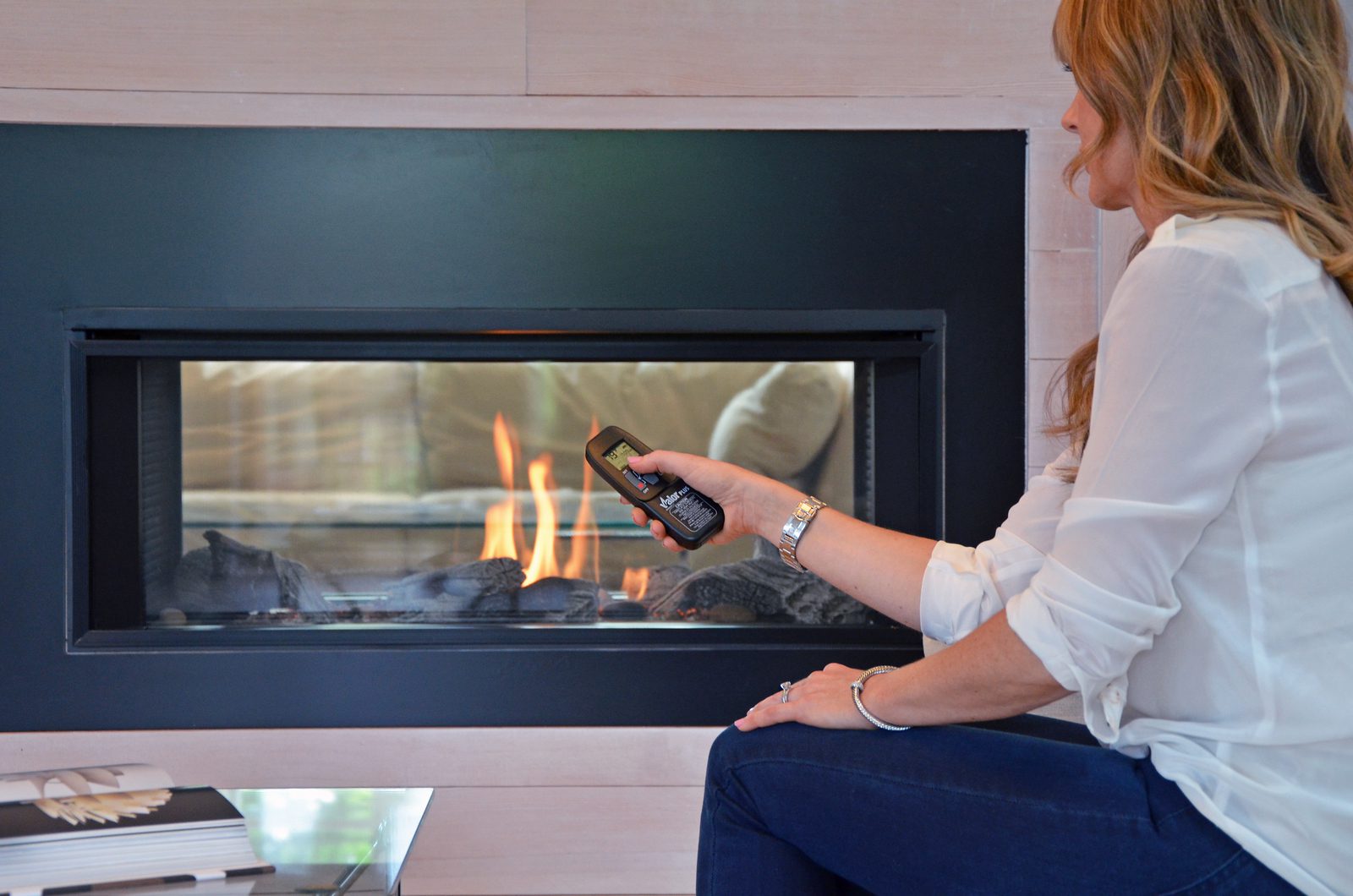Home>Technology>Home Entertainment Systems>How To Write A Television Pilot


Home Entertainment Systems
How To Write A Television Pilot
Published: December 20, 2023
Learn the step-by-step process of writing a compelling television pilot for home entertainment systems. Expert tips and techniques for beginners and experienced writers.
(Many of the links in this article redirect to a specific reviewed product. Your purchase of these products through affiliate links helps to generate commission for Storables.com, at no extra cost. Learn more)
Introduction
Welcome to the exciting world of television pilot writing! Creating a television pilot is an essential step in bringing a new show to life. It serves as the foundation for the entire series, introducing the characters, setting the tone, and captivating the attention of potential viewers. Whether you’re an aspiring screenwriter or someone passionate about television, this article will guide you through the process of writing a compelling television pilot that will capture the hearts and minds of audiences.
Before we dive into the details, let’s briefly go over the importance of a television pilot. A pilot episode is essentially a test run for a new TV show. It sets the stage for what’s to come, establishing the central premise, introducing the main characters, and showcasing the overall tone and style of the series. It’s the crucial first impression that can hook viewers and convince networks or streaming platforms to pick up the show for a full-season order.
When writing a television pilot, it’s crucial to strike a balance between introducing the world and characters, as well as telling a compelling story that can stand on its own. You want to capture the audience’s attention from the very beginning and make them eager to see more.
In this article, we’ll cover everything you need to know about writing a television pilot, from choosing a concept and developing your characters to crafting a captivating story and formatting your script. We’ll also discuss the importance of editing, revising, and getting feedback to polish your pilot to perfection.
So, if you’re ready to embark on this television writing journey, let’s dive into the first step: choosing a concept for your pilot.
Key Takeaways:
- Crafting a compelling television pilot involves choosing a unique concept, developing well-rounded characters, and creating a vivid world. The process also includes outlining a clear and engaging story and writing a polished script that captures the audience’s attention.
- Editing, revising, and seeking constructive feedback are crucial steps in refining the pilot script and ensuring its quality. Trusting your instincts and embracing the creative journey are essential for bringing your unique storytelling to life on screen.
Read more: How To Write A Television Script
Choosing a Concept
The concept of your television pilot is the foundation upon which your entire series will be built. It’s essential to choose a concept that is unique, intriguing, and has the potential for longevity. Here are some key factors to consider when selecting your concept:
- Market Research: Start by researching current TV trends and audience preferences. Look for gaps or untapped areas in the market that your concept could fill. Understanding what’s popular and what’s missing will help you craft a concept that stands out.
- Originality: Aim for a concept that is fresh and unique. Avoid clichés and overused tropes, as they can make your show appear unoriginal. Think outside the box and brainstorm ideas that haven’t been explored extensively on television.
- Conflict and Stakes: A compelling concept should have built-in conflict and high stakes. Consider the dramatic tension that can be created within your concept. Are there interesting conflicts between characters? Are there obstacles that the main characters must overcome?
- Longevity: Think about the potential for your concept to sustain multiple seasons. Is there enough material to keep the story going beyond the pilot? Avoid concepts that are too limited in scope or resolve all conflicts in a single episode.
- Target Audience: Consider who your target audience is and how your concept will appeal to them. Is it a drama, comedy, or a mix of genres? Knowing your audience will help you narrow down your concept and tailor it to their tastes.
- Personal Connection: Choose a concept that you are passionate about and that resonates with you personally. Your enthusiasm will translate into your writing and make the pilot more compelling.
Once you’ve considered these factors, brainstorm ideas that align with them. Be open to exploring different genres, settings, and themes. Write down as many concepts as you can and evaluate each one based on the criteria mentioned above.
Remember that your concept is just the starting point. It will evolve and change as you delve deeper into the writing process. The most important thing is to choose a concept that excites you and has the potential to captivate viewers.
Now that you have a solid concept in mind, it’s time to move on to the next step: developing the characters for your television pilot.
Developing the Characters
One of the key elements of a successful television pilot is well-developed and compelling characters. The audience needs to care about the characters in order to invest their time and emotions into the show. Here are some steps to take when developing your characters:
- Character Profiles: Start by creating detailed profiles for each of your main characters. Include information such as their background, personality traits, goals, and flaws. Think about their relationships with other characters and how they fit into the overall story.
- Complexity: Avoid one-dimensional characters by giving them depth and complexity. Give them strengths and weaknesses, inner conflicts, and hidden secrets. This will make them more relatable and interesting to the audience.
- Arcs and Growth: Consider the character arcs – the journeys your characters will go on throughout the series. Think about how they will grow, learn, and change over time. This will add depth to your characters and make them more dynamic.
- Backstories: Create compelling backstories for your characters that help explain their motivations and shape who they are. These backstories can be revealed gradually throughout the series, adding layers of complexity to the characters.
- Relationships: Explore the relationships between your characters. Think about their dynamics, conflicts, and connections. Strong relationships can drive emotional storylines and create compelling chemistry on screen.
- Unique Traits: Give each character unique traits or quirks that make them stand out. These distinctive qualities will help differentiate them from other characters and contribute to the overall appeal of the show.
- Balance: Ensure that your character ensemble is well-balanced. Each character should serve a purpose in the story and have their own distinct voice and role. Avoid having too many characters who fulfill similar functions.
As you develop your characters, keep in mind how they fit into the concept you’ve chosen for your pilot. Each character should have a specific role to play in advancing the plot and adding depth to the story.
Once you have a clear understanding of your characters, it’s time to move on to the next step: creating the world in which they will exist.
Creating the World
In order for your television pilot to feel immersive and engaging, it’s crucial to create a vivid and believable world for your characters to inhabit. Here are some steps to consider when developing the world of your show:
- Setting: Determine the setting of your show, whether it’s a specific city, a small town, or a fictional fantasy realm. Consider how the setting will impact the story and the characters’ lives. The setting can contribute to the overall tone and atmosphere of the show.
- Time Period: Decide on the time period in which your show takes place. Is it set in the present day, in the past, or even in the future? The time period will influence the visuals, technology, and social dynamics of your world.
- Rules and Laws: Establish the rules and laws of your world. This includes both the societal rules and any unique rules that exist within the world of the show. These rules can create conflicts and provide opportunities for character development.
- Culture and Society: Develop the culture and society of your world. Consider the customs, traditions, and social hierarchies that exist within the world. This will help make the world feel rich and realistic.
- Technology and Supernatural Elements: Determine the level of technology and any supernatural or fantastical elements that exist in your world. How does technology impact the characters’ lives? Are there any supernatural powers or creatures present? These elements add depth and intrigue to the world.
- Visual Design: Visualize the aesthetics of your world. Consider the production design, costumes, and overall look of the show. The visual elements should align with the tone and themes of the show.
- History and Lore: Craft a rich history and lore for your world. Create a backstory that explains the origins of the world and any significant events that have occurred. This will add depth and provide opportunities for future storylines.
By creating a well-defined world, you’ll not only provide a captivating backdrop for your characters, but also give your audience a sense of immersion and authenticity. The world-building process will influence the overall tone, visuals, and storytelling opportunities of your television pilot.
Now that you have a solid foundation with a well-developed concept, characters, and world, it’s time to move on to the next step: outlining the story for your television pilot.
Outlining the Story
Now that you have a solid concept, well-developed characters, and a vivid world, it’s time to outline the story for your television pilot. The story outline serves as a roadmap for your writing, ensuring that your pilot has a clear and engaging narrative. Here are some steps to consider when outlining your story:
- Beginnings: Start by establishing the world and introducing your main characters. Set the tone and grab the audience’s attention from the very beginning. Hook them with a captivating opening scene or moment of conflict.
- Conflict and Obstacles: Create a central conflict or problem that your main characters will face. Think about the obstacles they need to overcome in order to reach their goals. This conflict will drive the story and create tension throughout the pilot.
- Character Arcs: Outline the character arcs for your main characters. Consider how their journeys will intersect with the central conflict and how they will grow and change throughout the pilot. Each character should have their own storyline that contributes to the overall narrative.
- Plot Points: Identify the major plot points in your pilot. These are the key moments that propel the story forward and create turning points in the narrative. They can include pivotal events, reveals, or conflicts that heighten the tension and move the story towards its climax.
- Subplots: Develop subplots that complement and enhance the main storyline. These subplots can involve secondary characters and provide additional layers of conflict and intrigue. They should connect to the main narrative and contribute to the overall themes and character development.
- Pacing and Structure: Consider the pacing and structure of your pilot. Determine how the story will unfold and when the major plot points and character moments will occur. Ensure that there is a balance between action, character development, and exposition.
- Climax and Resolution: Plan a climactic moment towards the end of the pilot where the central conflict comes to a head. This should be followed by a resolution that sets up future storylines and leaves the audience wanting more.
Remember that your outline acts as a flexible guide, and you can make changes as you go along. Allow room for creativity and unexpected ideas that may arise during the writing process. The outline should provide a strong structure for your pilot while giving you the freedom to explore and develop the story.
With a well-crafted story outline in place, you’re ready to dive into the next step: writing the pilot script.
When writing a television pilot, focus on creating compelling characters with clear goals and obstacles. This will help to engage the audience and set up potential storylines for future episodes.
Read more: How To Write On Glass
Writing the Pilot Script
Now that you have a solid foundation with your concept, characters, world, and story outline, it’s time to bring everything to life by writing the pilot script. The pilot script is the blueprint for your television pilot, giving you the opportunity to showcase your storytelling skills and engage the reader. Here are some key tips to consider as you write the pilot script:
- Formatting: Follow industry-standard script formatting guidelines to ensure your script is easy to read and understand. Use professional screenwriting software or templates to maintain consistency in layout and formatting.
- Show, Don’t Tell: Use visual storytelling techniques to bring your story to life. Instead of relying on exposition or lengthy dialogue, show the audience what’s happening through actions, visuals, and character interactions.
- Dialogue: Craft realistic and engaging dialogue that reflects each character’s unique voice. Dialogue should reveal character traits, advance the plot, and create conflict. Avoid excessive exposition or on-the-nose dialogue that spells out everything explicitly.
- Tone and Style: Capture the tone and style of your show through your writing. Whether it’s a comedy, drama, or a mix of genres, ensure that the tone is consistent throughout the script.
- Visual Description: Provide clear and concise visual descriptions to set the scene and establish the atmosphere. Use evocative language to paint a vivid picture in the reader’s mind without overloading them with unnecessary details.
- Structure and pacing: Develop a strong structure that flows smoothly and maintains a good pacing. Introduce the characters and conflict early on, and keep the story moving forward with well-timed twists and turns.
- Character Development: Showcase the growth and development of your characters throughout the script. Allow them to face challenges, make difficult choices, and evolve as the story progresses.
- Cliffhanger: Leave the reader wanting more by ending the pilot with a captivating cliffhanger or a compelling setup for future episodes. This will generate curiosity and anticipation for the rest of the series.
- Proofread and Edit: Once you have completed the first draft of your pilot script, take the time to proofread and edit it for clarity, grammar, and typos. Consider seeking feedback from trusted peers or professionals to get valuable insights and make improvements.
Remember, the pilot script is your opportunity to showcase your storytelling skills and capture the attention of potential producers and networks. Take the time to craft a polished and compelling script that highlights the strengths of your concept, characters, and world.
With a complete pilot script in hand, the next step is to review and refine the formatting and structure in order to create a professional and captivating final product.
Formatting and Structure
Once you have completed your pilot script, it’s important to ensure that it is properly formatted and structured. Formatting and structure play a crucial role in making your script readable and accessible to potential readers, such as producers, agents, or executives. Here are some key elements to consider when finalizing the formatting and structure of your pilot script:
- Screenplay Format: Follow industry-standard screenplay format guidelines. Use a professional screenwriting software or template that automatically formats elements such as scene headings, dialogue, and action lines. This ensures that your script looks polished and is consistent with industry standards.
- Scene Headings: Begin each scene with a clear and concise scene heading that describes the location and time of day. Use established abbreviations like INT. (interior) and EXT. (exterior) to indicate the setting of the scene.
- Action Lines: Use action lines to describe the visuals and action taking place in the scene. Keep them concise and focused, using strong verbs and evocative language to create vivid imagery. Avoid over-describing or using excessive prose.
- Character Introductions: When introducing a character for the first time, capitalize their name and provide a brief physical and personality description in uppercase. This helps the reader quickly understand the character’s appearance and essence.
- Dialogue: Use left-aligned dialogue with the character’s name centered above their dialogue. Ensure that dialogue is clear, concise, and reflects the character’s unique voice. Use parentheticals sparingly to provide additional context or direction for the actor.
- Scene Transitions: Use transitions sparingly. Instead of explicitly stating transitions like CUT TO: or DISSOLVE TO:, focus on seamlessly moving from one scene to the next with the actions or dialogue of the characters.
- Page Count: Aim for a standard page count of around 55 to 65 pages for a one-hour drama pilot. However, keep in mind that the needs of your specific story may vary. Ensure that your script is tightly paced, and every scene serves a purpose in advancing the narrative.
- Act Breaks: Structure your script with clear act breaks. In a one-hour drama, these are typically placed around page 20 and page 40, marking the end of each act. These act breaks should leave the audience with a cliffhanger or a significant turning point.
- Proofread and Polish: Before finalizing your script, proofread it carefully for any typos, grammatical errors, or formatting inconsistencies. Ensure that the script is as error-free as possible to present a professional and polished final product.
Remember, a well-formatted and structured script not only demonstrates your professionalism but also makes it easier for readers to engage with your story. By adhering to industry standards and paying attention to the formatting and structure of your script, you increase its chances of being read and considered for further development.
Once you have finalized the formatting and structure, it’s time to move on to the next step: editing and revising your pilot script to fine-tune the storytelling and improve its overall quality.
Editing and Revising
Editing and revising your pilot script is a crucial step in the writing process. It’s during this stage that you fine-tune your storytelling, improve the flow of your script, and polish the dialogue and descriptions. Here are some key tips for effective editing and revising:
- Take a Break: After completing your first draft, take some time away from your script. This will help you approach the editing process with fresh eyes and a more objective perspective.
- Read Aloud: Read your script aloud to identify any issues with pacing, dialogue, or clarity. This will help you catch awkward phrasing and ensure that the dialogue sounds natural when spoken.
- Simplify and Streamline: Look for areas where you can streamline your script by removing unnecessary scenes, dialogue, or descriptions. Keep the story focused and ensure that every element serves a purpose in advancing the narrative.
- Check for Consistency: Review your script for consistency in character traits, plot details, and world-building elements. Make sure that the actions and decisions of your characters align with their established personalities and motivations.
- Elevate the Dialogue: Polish the dialogue to make it more engaging and authentic. Remove any repetitive or clunky lines, and strive for natural and character-specific language. Dialogue should reveal character traits, provoke conflict, and advance the plot.
- Show, Don’t Tell: Look for opportunities to enhance visual storytelling and minimize exposition. Instead of telling the audience information through dialogue or narration, find creative ways to show it through actions, visuals, or character interactions.
- Improve the Flow: Ensure that your script has a smooth and coherent flow. Check for transitions between scenes and paragraphs, and make sure that the pacing keeps the audience engaged from start to finish.
- Proofread for Errors: Carefully proofread your script for any spelling, grammar, or formatting errors. Even small mistakes can be distracting and diminish the professional quality of your script.
- Seek Feedback: Share your revised script with trusted friends, writing groups, or industry professionals and solicit constructive feedback. Consider their suggestions and insights to identify areas for further improvement.
- Repeat the Process: Editing and revising is an iterative process. After incorporating feedback, go through the script again to ensure that all the changes are cohesive and enhance the overall story.
Remember, the editing and revision process is an opportunity to make your script stronger and more compelling. Take the time to polish every aspect of your pilot script to ensure that it is the best possible version of your story.
Once you are satisfied with the editing and revising, it’s time to gather feedback from a wider audience and consider the next step in the process: getting feedback.
Getting Feedback
Obtaining feedback on your pilot script is a critical step in the writing process. It allows you to gain valuable insights, identify areas for improvement, and ensure that your script resonates with readers. Here are some tips for effectively seeking and utilizing feedback:
- Choose the Right Readers: Select trusted individuals who have experience or knowledge in the television industry. This can include fellow writers, industry professionals, or members of a writing group. Look for people who can provide constructive criticism and offer meaningful insights.
- Provide Clear Guidelines: Give your readers specific guidance on what kind of feedback you are seeking. Is it focused on the characters, story structure, dialogue, or something else? Clear instructions will help readers provide targeted feedback.
- Consider Different Perspectives: Seek feedback from a diverse range of individuals to gather a variety of perspectives. This can help identify blind spots, gauge the script’s appeal to different audiences, and uncover opportunities for improvement.
- Take Notes and Listen: When receiving feedback, approach it with an open mind and a willingness to learn. Take detailed notes and listen to the observations and suggestions provided. Consider all feedback, even if it might challenge or contradict your initial vision.
- Evaluate the Feedback: Review and assess the feedback you’ve received. Look for patterns, recurring comments, or suggestions that resonate with your own observations. Identify areas for improvement and prioritize the changes you plan to implement.
- Revise and Refine: Incorporate the feedback into your script. Make the necessary revisions and refinements to address the identified issues or areas of improvement. Ensure that the changes align with your overall vision while addressing the feedback effectively.
- Re-engage with Feedback Providers: Share the revised script with your initial feedback providers and seek their input once again. This demonstrates your receptiveness to their suggestions and allows them to see the impact of their feedback on the script.
- Repeat the Process: Consider seeking additional feedback from new readers after incorporating the initial feedback. This iterative process can help you fine-tune your script and strengthen its overall quality.
- Trust Your Instincts: While feedback is valuable, ultimately, remember that you are the author of your story. Trust your instincts and make decisions that align with your creative vision and intentions.
Remember, the purpose of seeking feedback is to refine and enhance your script. Embrace constructive criticism and use it as a tool for growth and improvement. By carefully considering and integrating feedback, you can elevate your pilot script to its fullest potential.
Once you have gathered and considered feedback, it’s time to make any final revisions and confidently move forward with your television pilot.
Read more: How To Light Rv Water Heater Pilot
Conclusion
Congratulations! You have reached the conclusion of this comprehensive guide on writing a television pilot. Throughout this journey, we have explored the key steps and considerations involved in creating a compelling and engaging pilot script for your show. Let’s recap what we’ve covered:
We began by discussing the importance of choosing a concept that is unique, intriguing, and has the potential for longevity. We explored how to develop well-rounded and compelling characters that resonate with the audience. We then delved into the process of creating a vivid and believable world for your characters to inhabit. From there, we moved on to outlining the story, ensuring that it had a clear structure and engaging plot points.
You learned about the critical process of writing the pilot script, focusing on aspects such as formatting, dialogue, and visual storytelling. We emphasized the importance of editing and revising your script to refine the storytelling, enhance the flow, and polish the dialogue and descriptions. Lastly, we highlighted the significance of seeking constructive feedback from trusted individuals and utilizing it to make meaningful revisions and improvements to your script.
Writing a television pilot is an exciting and challenging endeavor, but with this guide as your compass, you are well-equipped to embark on this creative journey. Keep in mind that writing is a process that requires creativity, dedication, and a willingness to revise and refine. Trust your instincts and remember that each pilot script is unique, reflecting your own voice and vision as a writer.
Now, armed with this knowledge, it’s time to put pen to paper or fingers to keyboard and bring your television pilot to life. Be patient, persistent, and open to the creative surprises that may arise along the way. Remember that the process of writing a television pilot is not just about creating a script, but also about bringing your unique storytelling to the screen and captivating audiences around the world.
Best of luck in your television writing endeavors. We can’t wait to see the exciting stories you’ll create!
Frequently Asked Questions about How To Write A Television Pilot
Was this page helpful?
At Storables.com, we guarantee accurate and reliable information. Our content, validated by Expert Board Contributors, is crafted following stringent Editorial Policies. We're committed to providing you with well-researched, expert-backed insights for all your informational needs.














0 thoughts on “How To Write A Television Pilot”